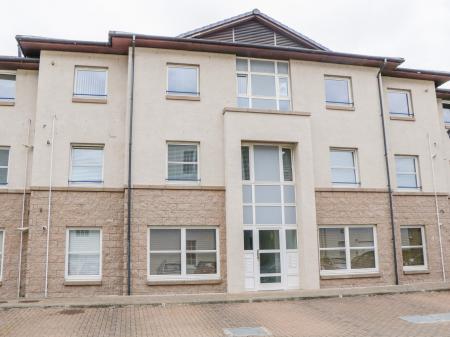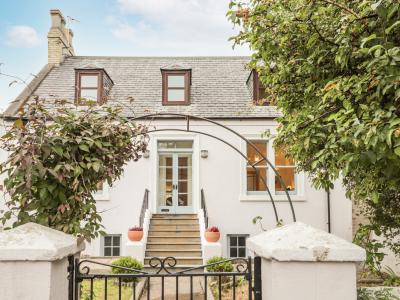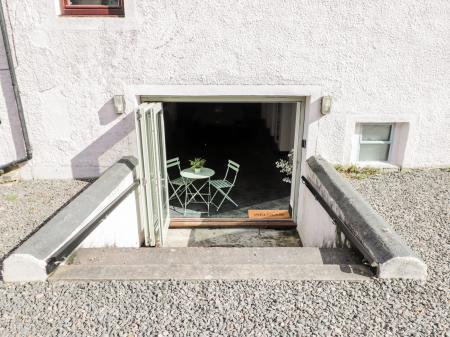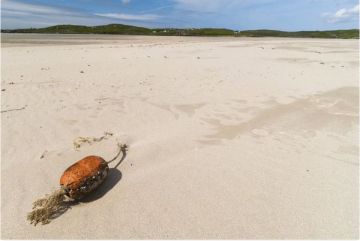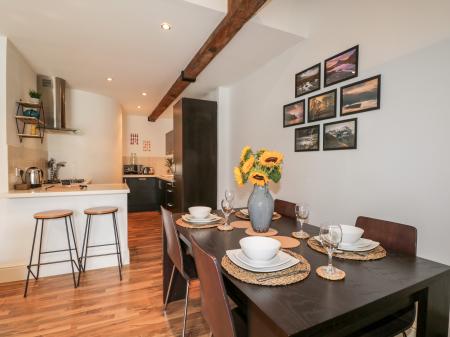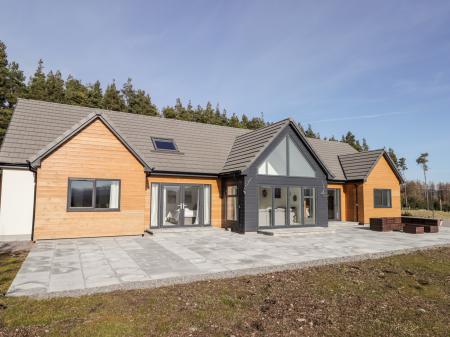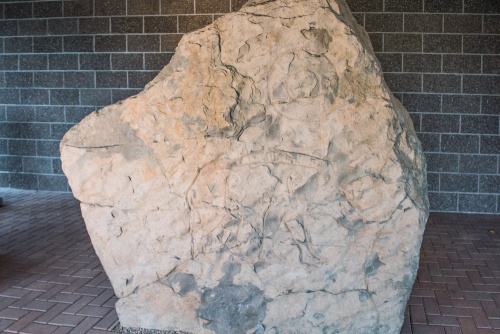
The stone is dominated by the boar image. It is shown with spirals on its shoulders and haunches, as if it is preparing to leap. There are bristles along its spine, as it would be if the boar was readying to fight. The entire carving has a sense of animation as if the boar is alive.
The stone is measured at 6ft 7in high, 7ft wide and 1ft 3in thick. It has been dated to sometime during the 7th-8th centuries, during the first phase of Pictish carved stones, before they began to depict Christian symbols mixed with earlier Pictish traditional symbols.
Though the stone is inside the council offices you can see it through a specially designed glass panel in the wall of the building, where Historic Environment Scotland has provided an information panel to interpret the carvings.

What was it used for?
We do not know why the stone was carved, but it may have served as a boundary marker, or to mark the grave of a person of high social status. It may even have recorded a marriage, as the mirror case symbol may symbolise a woman, and the boar may possibly symbolise a male.
A Visiting Adventure
Visiting the Boar Stone can get tricky. Though Historic Environment Scotland, who are responsible for the Boar Stone, says that the stone is in the council offices ('The Headquarters'), they don't say what part of the offices it is in. The Headquarters is not one building but a large complex of buildings, some of which are off-limits to the general public.

We thought that the most obvious place to enquire would be the main visitor reception on Glenurquhart Road (the A82). The receptionist we talked to had no idea what we were talking about and had never heard of a Pictish stone held in the council offices.
We were just about to give up and leave, when one of the receptionist's colleagues wandered by and asked if she could help. She thought for a moment and suggested that there might be something in a neighbouring building, but the building was never open to the general public.
So without much hope, we trudged further south along Glenurquhart Road until we saw an office building set back from the road. It was the most southerly building in the Headquarters complex. On the corner of the building was a very large glassed-in area. Through the glass you can see the Knocknagael Boar Stone, carefully lit, with an information panel just inside the window so it can be read easily from outside.

Clearly, the council doesn't actually expect, or want, visitors to come into the building but they do want them to be able to examine the stone and its carvings without compromising the building's security.
We took some photos through the glass, which was challenging as there were constant reflections. We were about to leave when an office-worker came out of the building entrance. She saw us trying to get a good photo through the glass, and must have taken pity on us, for she asked if we'd like to come inside so we could see the Boar Stone 'in person'.
She had to sign us into the foyer with her security card and she stayed with us while we took a close look at the carvings and took as many photos as we dared without making her wait too long.
We were lucky (and very grateful), but most visitors will have to content themselves with seeing the Boar Stone through the glass windows. Luckily the stone is reasonably well lit, and you can make out the shape of the boar with relative ease.
 We've 'tagged' this attraction information to help you find related historic attractions and learn more about major time periods mentioned.
We've 'tagged' this attraction information to help you find related historic attractions and learn more about major time periods mentioned.